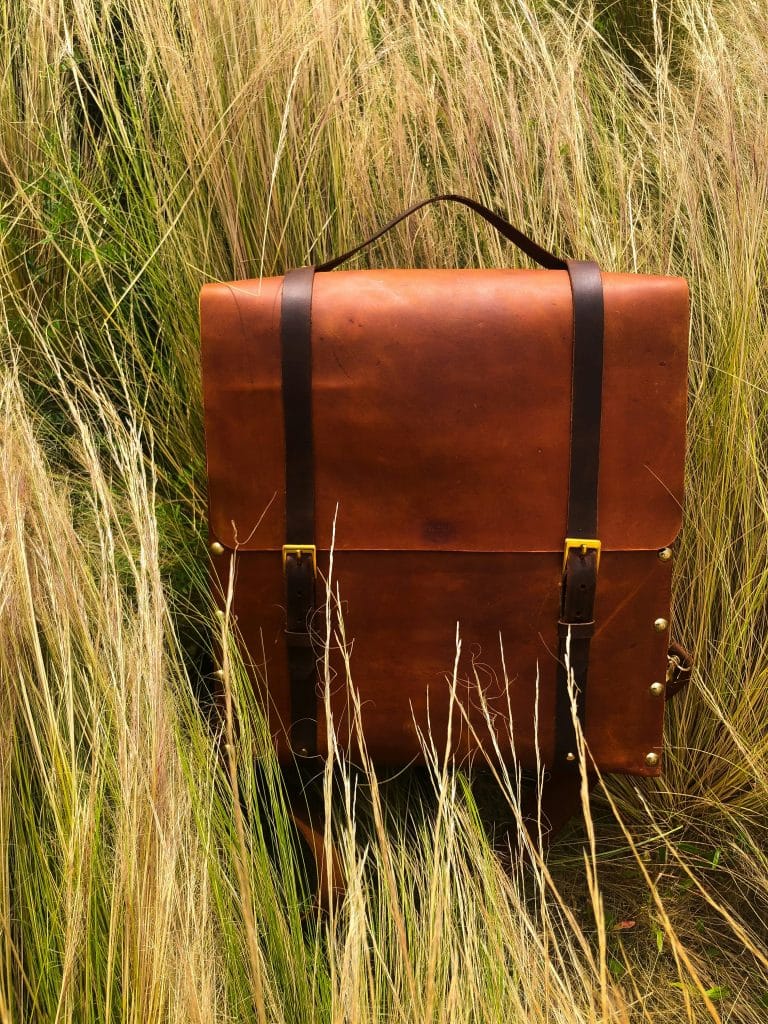
Introduction
Have you ever wondered how to determine the capacity of your backpack in liters? Whether planning a multi-day hike or simply wanting to ensure your bag fits all your essentials, understanding the volume in liters is crucial for any outdoor enthusiast. In this how-to guide, we will break down the simple steps to accurately calculate the liters of your backpack, so you can make informed decisions about packing and purchasing the right gear for your next adventure. By following these easy measurements and calculations, you’ll clearly understand how much your backpack can hold and ensure you’re properly prepared for any outdoor escapade.
Key Takeaways:
- Understand the formula: To calculate backpack liters, you’ll need to know the backpack’s dimensions in centimeters (length, width, and depth).
- Measure the dimensions: Use a tape measure to accurately measure the backpack’s length, width, and depth in centimeters.
- Convert to liters: Once you have the dimensions in centimeters, you can use the formula (length x width x depth) / 1000 to convert to liters.
- Consider additional compartments: If your backpack has extra compartments or pockets, you’ll need to measure and calculate the volume of these separately and add them to the main compartment’s volume.
- Factor in compression straps: If your backpack has compression straps, you must estimate how much they reduce the overall volume when tightened and adjust your calculations accordingly.
- Double-check your math. Double-check your measurements and calculations to ensure accuracy in determining the backpack liters.
- Use online calculators: If you prefer, online tools and calculators can help you quickly and accurately calculate the liters of your backpack.
Understanding Backpack Volume
One of the key considerations when choosing a backpack is its volume or the amount of space it can hold. Understanding how to calculate backpack liters is essential for selecting the right pack. This guide will break down the concept of backpack volume and provide practical tips for determining the right size for your adventures.

Definition of Backpack Liters
Understanding the concept of backpack liters is crucial for making an informed decision about your pack. Backpack liters refer to the volume of the backpack’s main compartment, measured in liters. This measurement gives you an idea of how much gear and supplies the backpack can accommodate. It is important to note that the volume indicated in liters does not include the additional pockets, compartments, and external attachment points.
Standard Backpack Sizes and Uses
The intended use is one of the first things to consider when looking at backpack sizes. Backpacks come in a range of sizes, from small daypacks to large expedition packs, each suited for different activities and durations of travel. For example, a 20–30-liter backpack is ideal for day hikes or commuting, while a 50–70-liter backpack is more suitable for multi-day backpacking trips. Understanding the standard backpack sizes and their intended uses will help you narrow your options and choose the right pack.
When discussing backpack sizes, it is important to understand the definition of backpack litter clearly. This measurement indicates the main compartment’s capacity and is crucial for determining how much gear the backpack can hold. By familiarizing yourself with backpack liters, you can make an informed decision when choosing the right pack for your adventures.
How-To Guide for Calculating Backpack Liters
While planning for outdoor adventures, one important consideration is choosing the right size backpack for the journey. Calculating the liters of your backpack is essential to ensure it can carry all the necessary gear without being overly burdensome. This guide will walk you through the process of accurately determining your backpack’s volume.

Step-by-Step Measurement Guide
Guide:
| Step 1: | Empty your backpack and remove any detachable compartments or pockets. |
| Step 2: | Measure the height, width, and depth of the interior main compartment of the backpack in centimeters. |
Continue measuring any additional compartments or pockets in the same manner to ensure an accurate total volume calculation.
Tips for Accurate Volume Calculation
For an accurate volume calculation, consider the following tips:
- Take multiple measurements to account for irregular shapes or protruding pockets.
- Utilize online backpack volume calculators for a rough estimate before deciding.
- The measurements should be taken from the backpack’s interior to ensure an accurate volume calculation.
The precision of your measurements will directly impact the accuracy of the backpack’s liters, so take your time and be meticulous in your approach.
This detailed guide will ensure that you are equipped with the knowledge to calculate the liters in your backpack accurately. Following these steps and tips, you can confidently choose the appropriate size backpack for your outdoor adventures, ensuring comfort and functionality throughout your journey.
Factors Influencing Backpack Choice
Not all backpacks are created equal, and several factors can influence your decision when choosing the right one for your needs. It’s essential to consider these factors carefully to select the most suitable backpack for your requirements.
- Duration and type of trip
- Personal packing style and gear volume
- Physical build and comfort
- Climate and terrain
Any of these factors can significantly impact the performance and functionality of your backpack, so it’s crucial to weigh them all when making your decision.

Duration and Type of Trip
Backpack size and capacity can greatly differ depending on the duration and type of trip you plan. A day hike will require a smaller pack than a multi-day backpacking trip, and a climbing expedition will have different storage needs than a cycling adventure. It’s important to consider the specific demands of your intended use when selecting the appropriate backpack.
Personal Packing Style and Gear Volume
When choosing a backpack, one’s packing style and gear volume should also be considered. Some individuals prefer to travel light and minimize their gear, while others may require additional space for specialized equipment. Selecting a backpack that can comfortably accommodate your specific packing style and gear volume is crucial, as too much or too little space can lead to inconvenience and discomfort during your adventures.
Personal packing style and gear volume are important considerations when choosing a backpack, as they can greatly impact your gear storage’s overall functionality and efficiency. Selecting a backpack that aligns with your specific packing preferences and can accommodate the volume of gear you typically carry is essential. By carefully evaluating these factors, you can ensure that you select a backpack that will enhance your outdoor experiences and meet your individual needs.
Advanced Considerations
For those looking to delve deeper into backpack liter calculations, there are some advanced considerations to remember. Here are some additional factors to consider:
- Adjusting for External Attachments
- Compensating for Irregularly Shaped Gear
Adjusting for External Attachments
One important factor to consider when calculating backpack liters is the impact of external attachments. Items such as sleeping pads, trekking poles, and water bottles strapped to the outside of the pack can add bulk and affect the overall capacity. When accounting for these external attachments, it’s essential to adjust the total volume to reflect the actual carrying capacity of the backpack accurately.
The presence of external attachments can significantly alter the shape and dimensions of the backpack, affecting how gear is packed and the overall volume available for storage. It’s important to carefully assess the impact of external attachments and make necessary adjustments to ensure accurate backpack liter calculations.

Compensating for Irregularly Shaped Gear
The irregular shape of some gear items can pose a challenge when calculating backpack liters. Items such as climbing helmets, tents, and other bulky gear may not fit neatly into the backpack’s main compartment, requiring creative packing solutions. The irregular shape of such items can also affect how they interact with other gear, further impacting the overall storage capacity.
The presence of irregularly shaped gear requires advanced consideration when calculating backpack liters. It’s essential to assess the impact of these items on the available storage space and make compensations in the liter calculations to account for their unique dimensions and storage requirements.
Advanced consideration should be given to the impact of irregularly shaped gear on the overall packing efficiency and available storage space. By accounting for the unique dimensions and requirements of such gear items, more accurate backpack liter calculations can be achieved, ensuring that the backpack meets the user’s specific needs.
Conclusion
Conclusively, calculating backpack liters is a straightforward process that involves measuring the backpack’s dimensions and using a simple formula to determine its volume. By multiplying the length, width, and height of the main compartment and any additional compartments in centimeters and dividing the total by 1000, you can easily determine the capacity of your backpack in liters. Understanding the capacity of your backpack is essential for ensuring that you can comfortably carry all your gear while out on any adventure. By following these simple steps, you can accurately calculate the liters in your backpack and make informed decisions about your packing needs.
FAQ
Q: What are backpack liters, and why are they important?
Backpack liters refer to the capacity of a backpack, which is important to know to ensure that the backpack can hold all the necessary items for a trip or adventure.
Q: How do I calculate the volume in liters of my backpack?
A: To calculate the volume in liters of your backpack, measure the length, width, and depth of the main compartment in centimeters. Then, multiply these three measurements and divide by 1000 to get the volume in liters.
Q: Are there any standard backpack liter sizes?
Yes, there are standard backpack liter sizes that include small (under 30 liters), medium (30–50 liters), and large (50+ liters).
Q: What factors should I consider when choosing a backpack size?
A: Consider the length of your trip, the type of activities you will be doing, and the climate you will be in. A longer trip, more intense activities, or colder climates require more gear and a larger backpack.
Q: Can a backpack’s liters be converted to another unit of measurement?
A: Yes, backpack liters can be converted to cubic inches by multiplying the liter measurement by 61.02. This will give you the cubic-inch capacity of the backpack.
Q: Do all backpacks have a single-liter capacity?
A: Some backpacks have multiple compartments, each with its own liter capacity. When choosing a backpack, it’s essential to consider the total liter capacity of all compartments.